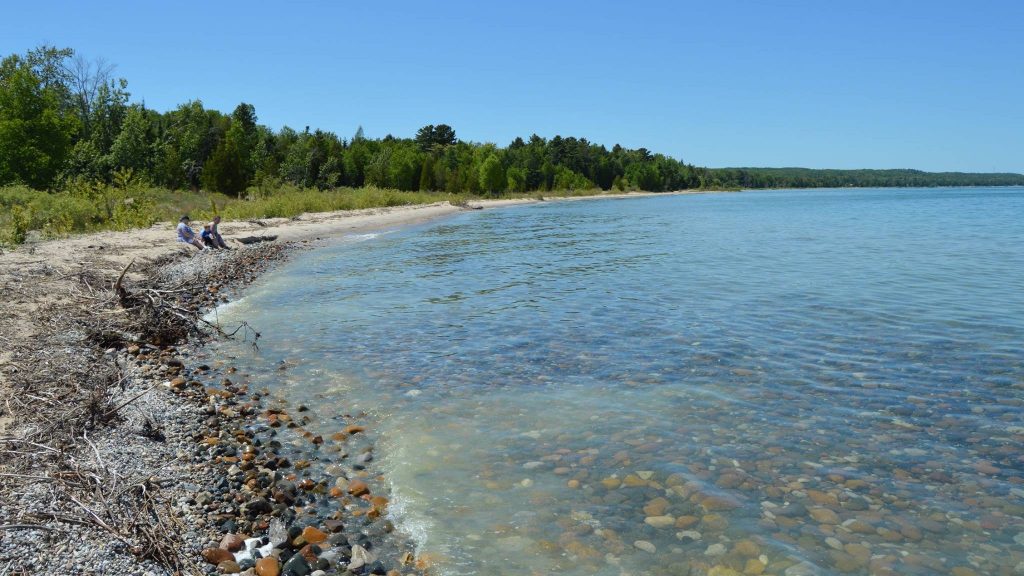Deal to stop Great Lakes water diversion has worked for 15 years
The Great Lakes Compact bans the diversion of Great Lakes water outside the basin, with limited exceptions.

The Lake Huron shoreline.
Michigan and seven other states made a pact in 2005 to protect the Great Lakes from environmental and human-made threats. Specifically, they wanted to prevent hotter, drier places from siphoning water away from the Midwest.
Marc Smith of the National Wildlife Federation says thirsty southwestern states and China were in desperate need of fresh water. He says governors of Great Lakes states viewed this as a threat to the region’s economy and environment. Officials in Ontario and Quebec agreed. They joined those states in drafting the Great Lakes-St. Lawrence River Basin Water Resources Agreement. Today, it’s called the Great Lakes Compact.
“We have a lot of fresh water, so that was the impetus for getting all the governors and premiers together to form a regime that would protect the Great Lakes now and into the future,” Smith said.
In 2008, President George W. Bush signed the compact into law. Since then, Smith says the agreement has shown how states can work together to manage their water resources.
“We have put in place protections that would allow the continued use for agriculture, business, or industry while simultaneously protecting our drinking water, our fisheries, and our quality of life,” Smith said.
Read more: Canada pledges $300 million investment to help clean up the Great Lakes
Compact members still have work to do
The American political landscape has changed since 2008. Michigan has lost two congressional seats. Texas has gained six, while Arizona has added one seat.

Smith says the compact still protects the Great Lakes from the shift in political power to drier southern states.
“There are still requirements that will not allow places outside the Great Lakes basin to divert water,” he said, noting that arid places are now looking at diverting water from the Mississippi River basin.
Smith says the compact also empowers Great Lakes states to address the impacts of climate change, as alternating droughts and downpours have wreaked havoc on water levels.
“It’s no longer this roller coaster of high water every 10 years then low water every 10 years,” he said. “Maybe five years ago, we were dredging for water. Fast forward to two years ago, we had the highest water levels in the Great Lakes, and now the waters are going down.”
Smith says the members of the compact review it every five years, using the latest science to adjust to climate change.
“We really struck a balance that has allowed the Great Lakes to continue to thrive and utilize water as a driver for not only our economic well-being, but also our ecological well-being.”
Listen: Marc Smith of the National Wildlife Federation talks with WDET about the Great Lakes Compact
Trusted, accurate, up-to-date.
WDET strives to make our journalism accessible to everyone. As a public media institution, we maintain our journalistic integrity through independent support from readers like you. If you value WDET as your source of news, music and conversation, please make a gift today.
